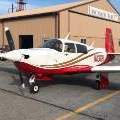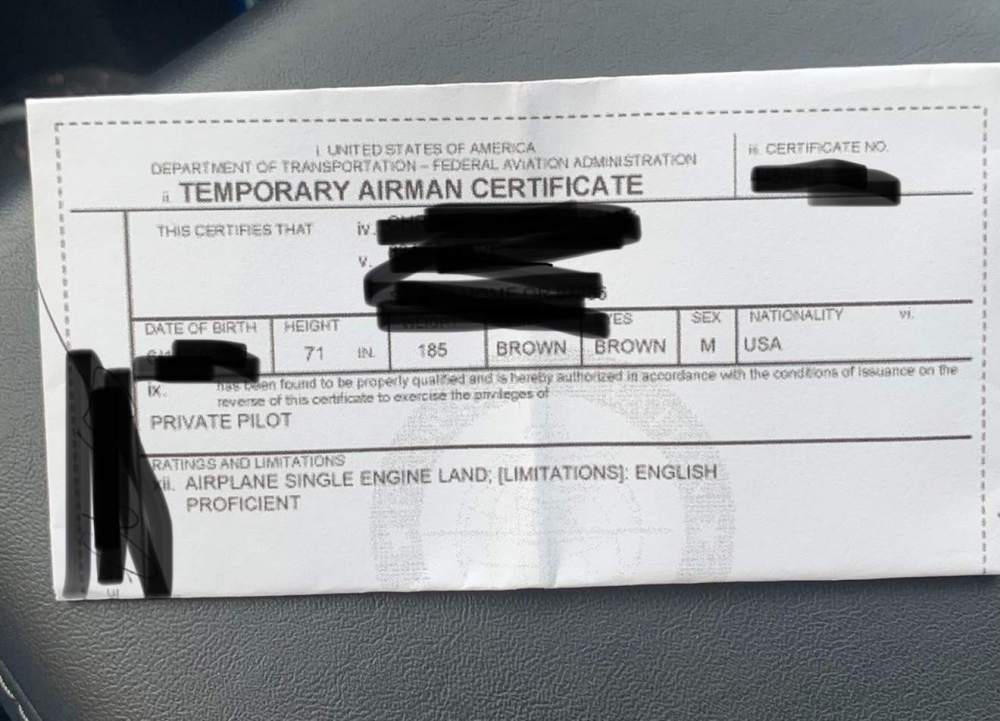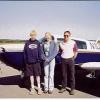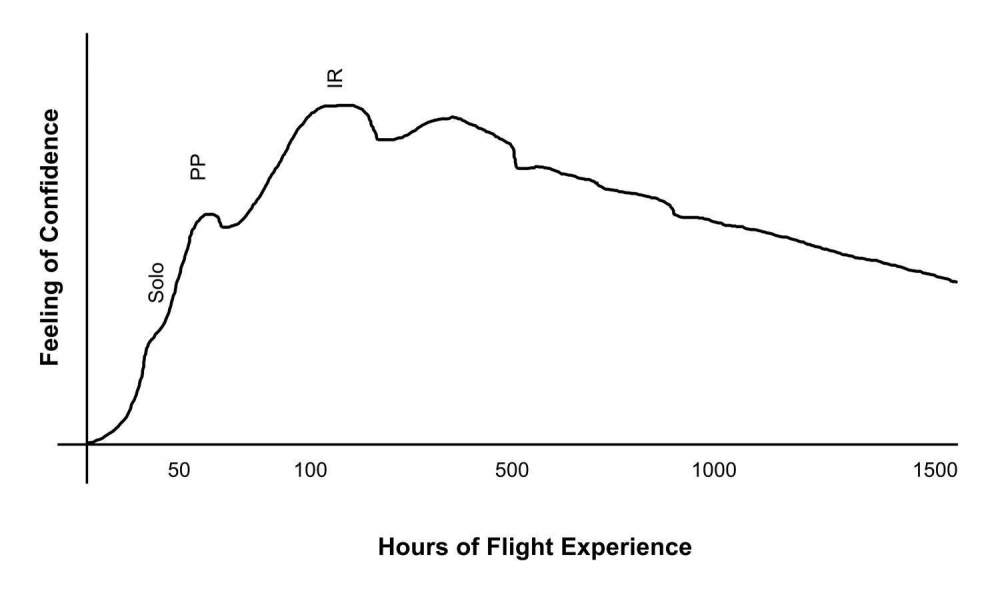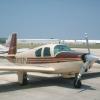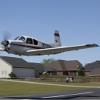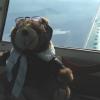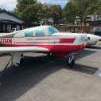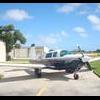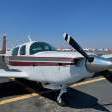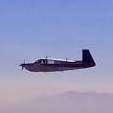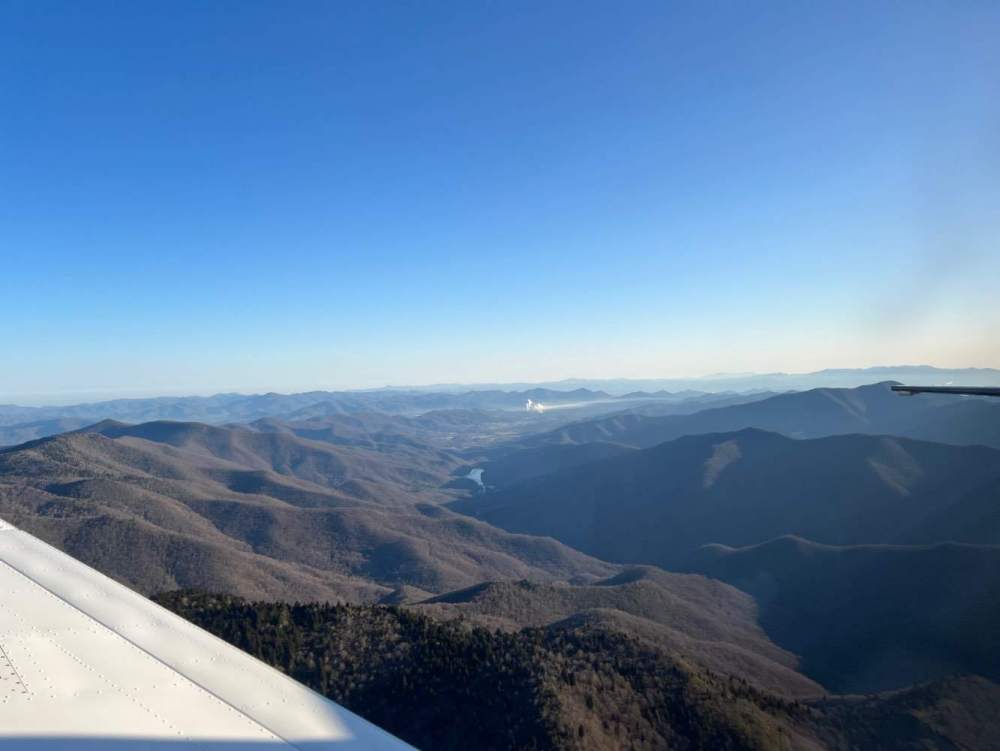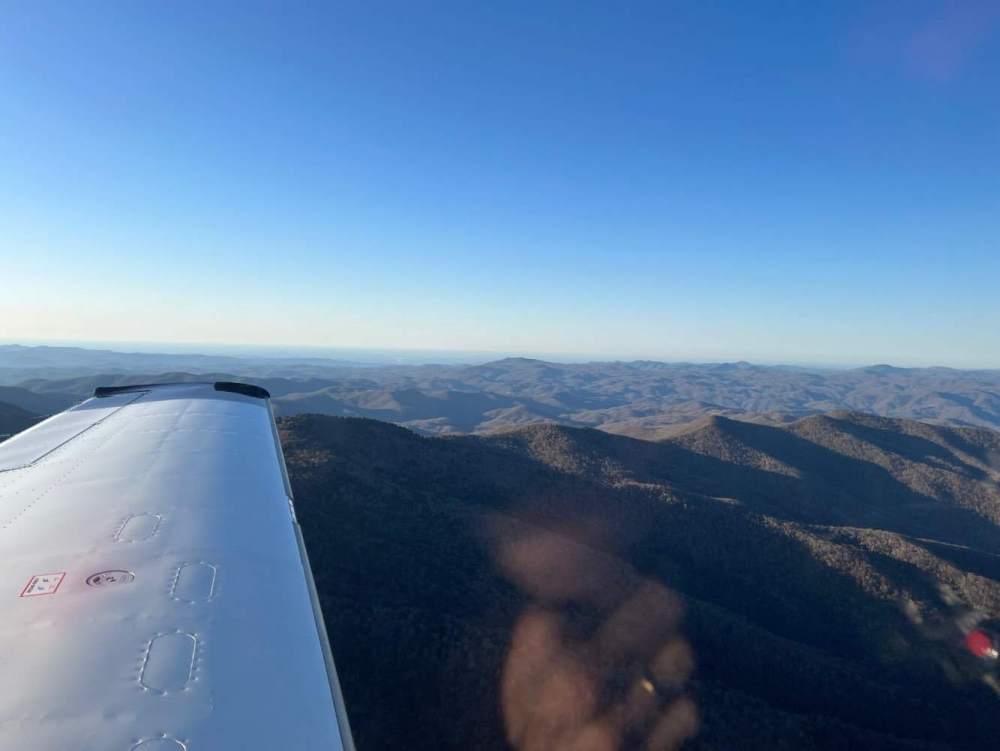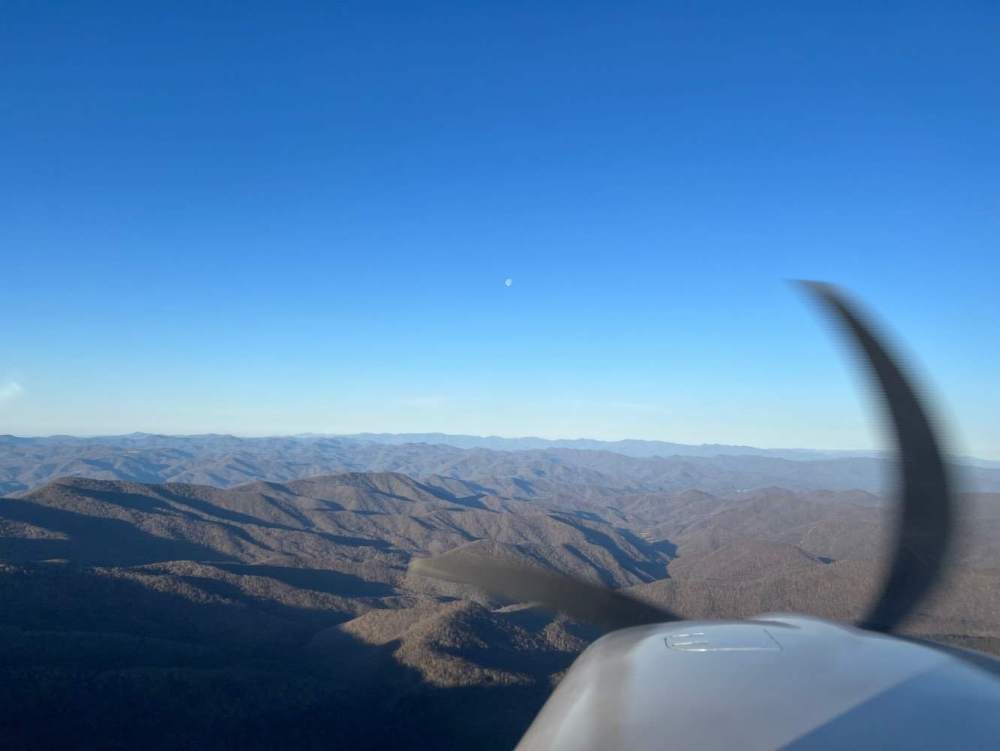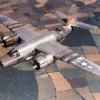Leaderboard
Popular Content
Showing content with the highest reputation on 03/22/2022 in all areas
-
7 points
-
This will be my first post in a long time. I will be shortly rejoining the ranks of Mooney Owners for a few years. Reasons to be discussed at a later date. I felt EXACTLY like @201er and took that feeling seriously. Your self assessment and realistic attitude spells “professional pilot” in my book!! I have done 8-10 hours of recurrent training ANNUALLY, for the last five years, and can testify having been handed the UGLIEST possible flying scenario recently, a serious attitude, acceptance of the risks and dedicated QUALITY training could save your life someday. And @cliffy, your last paragraph in your quoted text above EXACTLY describes the difference between a crash and an EMERGENCY LANDING. The damage to the plane is NOT the deciding factor. Flying it to the ground (and walking away) determines the difference!! Stay safe everyone. Tom5 points
-
Today was a fairly windy and gusty day in Tracy, California. Not unusual after passage of a cold front yesterday. I had two brothers who bought a C model last week and were looking forward to their first day of transition training. Based out of San Jose, I flew my plane over there. It was a little bumpy, but not bad in my plane. I saw their plane in person for the first time. It had not been well taken care of. I checked for an Annual and it was confirmed. It wasn't done by a Mooney Service Center. While doing the preflight the sump valve couldn't be completely stopped from leaking on the left tank. There were no brakes on the right side. Given the conditions I told them it was not a good day to start the training. Instead, I took each of them up in my plane for a couple of times around the pattern and demonstrated handling such conditions. Even with my experience I didn't feel comfortable taking an unfamiliar airplane with people who had never flown a Mooney before up today. I think I was reasonably uncomfortable flying any airplane for my first 1,000 hours. I was uncomfortable flying my airplane for the first 100 hours. But I really wanted to get over that. My skillset really improved with the CFI and CFII ratings, and was honed when I got my ATP in my airplane. I kept learning about the weather by ferrying airplanes between Mooney Sales people. Each flight and enroute weather was different. I flew to most Homecomings in Kerrville and to Oshkosh 22 times so far. And then there has been all the learning that has taken place in my to date 6,603 hours of teaching over the past 28 years. Clarity, I think, comes from experience. You begin to know more about what you didn't know you didn't know. I've been flying 55 years and it never gets boring. In addition to the CFI, CFII, MEI, ATP, Basic and Advanced ground instructor, and CE525S Type rating, I got the Wright Brothers Master Pilot award a few years ago. To further increase my knowledge, I've done the requirements for the Master CFI for the past 20 years (going on 22 this year). Participating in these challenges has brought me better understanding and improved comfort level. The new technology has accelerated that process because it's so much easier to decide when it is safe to go and when it's best to stay on the ground in addition to being just plain fun to use. From my perspective, even if near middle age, you are just at the beginning of your flying adventures. You have more perspective to properly guide your decisions. With that added perspective you are in a position to make better decisions that lead to a higher level of comfort in your flying. Carry on my friend.4 points
-
Some days are magic. We flew with my two sons for breakfast. Nice day, everything worked out well and my landings were great!!! I hope you enjoy the video as much as I enjoyed my time with the boys. Sent from my iPhone using Tapatalk Pro3 points
-
Is it just me? The more I've been flying the less sense of confidence I carry. Reflecting back on over 17 years of aviating, I've been realizing that I had less concern and felt more adept at carrying out a flight the further I go back. Now I don't know if it is more attributable to age or flying experience. Inevitably both progress forward together. Past a certain point in my flying history, I have been seeing a gradual but downward trend in confidence. In the beginning, it is all up up up. You learn something new, you solo, you earn a certificate... you get all these milestones and accomplishments that say "you know what you're doing." However, past a certain point, it seems like it's only the opposite. Something breaks, I have a bad flight, screw something up, lose a friend, read about an accident... Here's a rough sketch of how I feel my overall flying confidence level has progressed over time. Most of the peaks are represented by milestone accomplishments, dips are scares, and a steady overall downward trend ever since. With time it seems that more and more I discover how much I don't know and how much I am capable of screwing up. Now in the beginning, this is something you are entirely unaware of. But, with experience, I discover naive thinking or unknowing mistakes of times past. Carrying this greater amount of awareness is burdensome. It also makes me comprehend slightly better how much I don't know or have the potential to screw up than back then. Or perhaps the skills are fading with time? Back at just a few hundred hours flying time, I was ready to launch in any weather, land on the shortest runways. And I was sharp. Or at least it seemed that way. It always seemed like I could do it, no problem. With time, I'm more and more reluctant testing the edge of my envelope. And it's not for lack of instruction or ratings. I still get regular flight reviews, IPC's, added a rating. Doesn't seem to make a difference. My 10th flight lesson, I probably learned more than in my last 10 flight reviews (or IPC)! Does this happen to everyone? Does anyone actually get more confident as they get older or gain a lot of flight time? I'm not really sure if I have a specific question or a point I'm trying to make. Just an observation. Not sure if it's better to be blissfully unaware or to be burdened with progressively greater awareness that erodes at confidence. Is there an antidote and would I even want one?3 points
-
This is how I learned about It, listening to him tell the story was a little surreal and the pictures are worth more than words. I got my co2 sensor for flight training right after. FYI if I remember right it also happen to a Comanche pilot many years ago and he also survived.3 points
-
I'll come from a different viewpoint: Since I had and recovered from heart failure and also suffered an engine out emergency off field landing - all in the last 4 years (after being out of flying almost 20 years), I've come to realize how short our time is and not to 'waste' opportunities- like flying. Sure, mitigate and prepare as much as we can but, things just happen. I'm thankful each time I get behind the controls knowing I was given a second chance. My heart failure (if not caught in time) would have probably been fatal. I was lucky (my cousin did not catch his, died in his sleep @ the age of 55 - runs in the family). So, I train as much as possible, practice often (weekly in the pattern with ATC). Read, as much as I can about GA accidents and do my best to learn from them. Age gets us all but, I'm doing my best to stay sharp as flying is a diminishing skill if not practiced. I'm encouraged when I read pilots in their 70s, 80s, and 90s are still flying and are still sharp. -Don3 points
-
Confidence increases with skill level. Keeping active in flying and training helps. Don't be complacent about anything in flying Even with 55+ years in this game I still go out and go roundy round at the airport to keep my pattern skills up there. Don't accept sloppy flying. Work hard to make the perfect flight (it will never happen). VFR or IFR it doesn't matter Work at being professional in every aspect of aviation. It all contributes to confidence. Now being older and wiser I don't take the "chances" I once did. No night SE for me In fact I have limited myself to day VFR. Just personal choice on minimums I've got nothing more to prove, I've got all the time in the world to get there so stopping if I don't like something ahead ain't no big deal. Bear in mind that if you are UNDER CONTROL when you touch down (no matter on or off field) you will in all likelihood survive. It happens every day.3 points
-
Anyone have a link to the post accident post where a member lost consciousness and woke up, in a field? Also is Sensorcom still offering a discount code? The C-120/140 crowd are discussing what’s the Mooney guys have already been through, accuracy of the spot detectors etc., and I’d like to give them a link to the accident post and possibly a discount code on the Sensorcom if allowable.2 points
-
2 points
-
Having 2 cylinders replaced doesn't say anything about the engine's history, but it is a concern in regards to replacing 2 cylinders at once--there are definitely wrong ways of doing it, so you would want it done by people who know how.2 points
-
And the luckiest man I've ever met! His story told at the Mooney Summit was amazing, eye opening and the reason I now own two Sensorcons. Oh, I threw away my last "black dot" card as soon as Sensorcon #1 arrived, too.2 points
-
I really can’t rethink what has already been done. It’s history. He has built many engines since the 80’s. He worked at a shop for years where they had a water dyno and did as you describe. Shops that have that equipment charge about $10k more for the engine rebuild. Not everything is ideal, but it comes with a 2 year warranty and I trust him, as he’s built hundreds of engines. I’d rather not have the anxiety of trying to question history right now. I’d rather just focus on hanging it and break-in. thanks for your comments though. You’ve posted tons of valuable info all over MS for a long time. I appreciate you!2 points
-
2 points
-
I’m sure others will jump in, but it kind of depends. The spar is a one piece structure riveted together in subassemblies. It is really a laminate vs one piece of metal…like a modern machined spar might be. Not easy to repair, but some folks have taken it on. Spar cap corrosion is somewhat common and often repaired…so if said tug only damaged that, maybe a reasonable repair. As you get deeper in the spar, the harder the repair gets, until it is cheaper to buy a “new” wing or airplane. Here’s hoping this is a hypothetical and you aren’t going through this as we speak.2 points
-
I am going to state some sort of different things. 1) young and brash is a thing. When I was young and brash - I "borrowed" my step father's Porsche 911 - which even then was an older model. But still a fun car. I was a really a "standard model crazy teenage boy behind the wheel of too much car" at the age of 18. I remember scary the crap out of myself and my friend driving around a "corner" on the CO parkway (Rock Creek Park, MD) on an empty road divided highway designed for 55mph speed limit - and seems like a gradual turn at 55...well I can tell you that at 135mph....those tires were like really gripping and barely holding on. I am here living and breathing today by the grace of God that the car didn't get up to 140mph by the time I hit that turn because I am pretty sure the traction would have given away - but my friend and I lived past 18 years old that day. There was a kid 2 years above my boys age group about 10 years ago - similar scenario - didn't survive their joy ride. So if I had owned too much plane at that age - would I have done some pretty dumb stuff in a plane, skilled, fearless and stupid. Likely yes. 2) Somehow confidence builds over time the longer nothing bad happened in your past, and perhaps the longer you saw nothing bad happening to your friends or people you know. So that's just accumulated luck gives a sense of confidence. That's a natural human reaction of how we psychologically assess relatively dangerous but relatively low probability events.2 points
-
Mike, I think you’re experiencing 2 things at about the same time in your life. First, at 35 years old with a wife and child, you have more to lose than you did at 18. You’re not necessarily losing confidence, but your age and experience are making you question things in ways and for reasons that you never did before. This is very normal. It’s why 18 year olds pursue extraordinarily risking behaviors and middle aged people usually don’t. The second factor involves your experience level. As you gain experience, you start realizing all the things that can go wrong. My guess is that you’re thinking more about the unknowns, particularly things like a catastrophic failure of some component or bizarrely unforecast weather. Before, you didn’t know what you didn’t know. Now you do. The upside to this is that it’s making you a safer pilot. I found your graph very interesting, because it’s so similar to another graph I’ve seen often in the last 33 years:2 points
-
No doubt. It is a fun plane to fly! I am taking a couple weeks off, as the plane is now in for annual lol.. But then it is on to instrument training.2 points
-
Dan Bass is a folk hero. He's done the circuit, TV, AOPA, Mooney Summit. There's videos of him talking about it on youtube as well. But, nothing like hearing it straight from him in person.2 points
-
2 points
-
25 hrs, and four(ish) months. My typical flight is less than 2 hrs. If I’m on a long cross country, I’ll extend the hours until I get home. I cut the filter and pull the sump screen every time. I had an engine shop tell me that even more important is to get a paint filter (that goes over the top of your pail) from Home Depot and screen the oil as it drains. I also use a clean pail and inspect the bottom for shiny stuff after I dump the oil into my haz waste transport can.2 points
-
1 point
-
I think the example in that link is a unicorn. If a Garmin dealer determines that the GIA63Ws are airworthy and they install them and then down the road later need to have them serviced I doubt that it would be a problem, otherwise we would surely have heard about it by now on an actual install rather than a theoretical.1 point
-
Video made me think twice about CO in the cockpit. I always get a little smoke from oil burning off the muffler shroud on startup. (The oil leak is my bane and am always looking for ways to eliminate it). Any way it encouraged me to spend a little and buy a CO sensor/monitor. Found out I did have a little uptake around 15ppm right after start for a few minutes. In flight it went right back down to 0ppm. That peace of mind was worth every penny spent on the monitor. Thanks for Dan Bass for putting the video together and this forum for helping me be a safe flyer.1 point
-
My advice to you, start hitting the books and get a leg up on the training before it even starts.1 point
-
1 point
-
1 point
-
Those were used units. I went back and checked my messages. It was $32,500 installed. The only GIA-63W boxes that are compatible with the G1000 Mooneys are the ones that end in -01 or -20.1 point
-
1 point
-
1000’ always 4 things that must be checked 1) stable on the approach 2) go around altitude set 3) landing checklist complete / gear down 4) cleared to land.1 point
-
Does anyone know if there's 3d models and animation of Continental engines as show in this video? Pretty fascinating! @M20Doc something you might know of? Shawn1 point
-
That really stood out! Wondered briefly if it was a frame rate issue or if it was really going backwards… Either way, the rate of rotation didn’t match the speed the plug was going in… Could be a left handed course screw thread… Best regards, -a-1 point
-
How much risk tolerance do you want to have? Minimized risk… regular patterns… three gumps… increased risk… something different… There is a reason for repeating the same thing three times… when technically, once is enough… is one gumps, more important than the others? Which one would you choose to skip? I think you mentioned risk management earlier… Best regards, -a-1 point
-
1 point
-
Daily deaths have plunged precipitously in just the last week or two from around 2,000 to about 100, but the growth of the BA.2 subvariant is concerning.1 point
-
That’s a Hoskins wingtip strobe, the Hoskins boxes have been out of production for a couple of decades now, but you can morph a Whelen strobe box to work with it, tou gotta repin the strobe side connector…. the strobe tube can also morph and aeroflash tube by cutting it down enough to fit it inside of the lens, or building up a Whelen tube, and the plastic lens can be replaced with a Piper tail light lens1 point
-
1 point
-
1 point
-
I assume so. Looking at flightradar24, there are always NATO or US assets orbiting over Poland near the Ukrainian border. Last night there was a Globalhawk flying a pattern at FL560. This morning there were NATO and UK AWACS aircraft flying orbits. I'd expect that they are ready to flip the switch and jam all GNSS systems within range if needed. From FL 350 where the AWACS fly, the sea-leval horizon is 230 miles, from Globalhawk at FL 560 it is 290 miles.1 point
-
Why not buy two? You need a Mooney for when your Mooney is in annual! I didn't do the seats. Interior work was done in 2017. The logbook entry actually doesn't say the company that did it--but I have a random receipt and it looks like it was a company called Taildragger Aviation in Poplar Grove, IL.1 point
-
Turbos are a little different, you need to let them cool enough so the oil doesn’t burn off and form coke after shutdown, same thing is going on in valve guides, excessive oil is getting in and it burns off and forms coke. Many auto turbos have gone to water cooled center sections to prevent that, but that’s not an option for us, usually all it takes is two min at idle to cool a turbo enough to prevent coking. Bottom line is the oil is at its best coming out of the bottle, from then on its a downhill slide, you get to decide how far down it gets before you have to change it. IF we had a very fine bypass oil filter, then maybe I could get behind extending oil change intervals, but we don’t so I’ll waste a little money on oil changes, although I’ll admit to never having seen an aircraft engine fail from not having its oil changed, but I have seen bearings etched and corrosion on valve stems etc that likely came from acid. What oil analysis is exceptionally good at is determining the condition of the oil, unfortunately it’s most often sold as an engine analysis, but if you do oil analysis, pay particular attention to TAN, TBN, fuel content etc, analysis can tell you if your not getting your oil hot enough. Not getting it hot enough is more of a problem than overheating, oil max oil temp limits are no where near the max for oil, they are engine temp limits, oil can easily handle much higher temps. Average Auto oil temp is in the low to mid 200’s, and it lasts what 10,000 miles? Average auto speed isn’t as high as we think, it’s really less than 30 because we spend a lot of time stopped or in slow traffic, so 10,000 miles is more than 300 hours. Now aircraft engines are not auto engines, but I’m trying to point out that at 50 hours aircraft oil itself is in great shape still, but it’s full of stuff you don’t want in your oil1 point
-
1 point
-
Started in gliders at 18, airplanes 20, Mooney 24. Looking back at my logbook, I had 23 flights in a Piper Arrow before getting my 201, 21 in a Skyhawk, but my goodness I felt like I had mastered those planes. I don't know if they were just that much easier to fly or it was a novice attitude (haven't been back up in them since having a Mooney to find out). But nowadays I can fly that many flights in a couple trips or a few months. I log enough time to make minimums from Private Pilot every time I change my oil! I dunno, flying was a lot easier and more confident back then.1 point
-
Obviously, there's no such thing as changing oil "too frequently", but I come up with a big zero when I try to recall damaged engines from habitually infrequent oil changes. Today's oil is pretty darn resilient. If your engine goes past TBO with annual oil changes, is that "good enough"? Some $90 lawn mowers are sold today that never need oil changes... I suspect a $40,000 aircraft engine may be able to withstand 50 hours, or 1 year between oil changes.1 point
-
More details needed. What engine are we talking about? How many hours and years since overhaul? Has the plane been sitting a lot? Or has it been flown a lot, by someone who doesn't mind the temperatures?1 point
-
The gasket surely didn’t crush the right way… Great pics Larry! Proof that Lycomings don’t have to leak oil… they just have soooo many opportunities to leak oil… Best regards, -a-1 point
-
I’m a 32 year owner of an F model which has the same engine as yours. As Rags mentioned, I wouldn’t mess with the mixture in the pattern unless you’re in the higher elevations. What caught my attention was that you said your fuel pressure was 36 PSI.That is way too high. Something isn’t right. My F will have an inflight pressure in the 24” to 25” range. With boost pump on, I see a solid 27”. I think the red line is 30”. As others have mentioned, it might be good to have another set of eyes have a look. Sent from my iPhone using Tapatalk Pro1 point
-
Buy the LHS…landing height system…I find with this device 10% of my landing are “good” and 90% of my landing are “super soft” smooth landing extend the life of tires, brakes, fuel tank sealants, all of the landing gear joints, bearings etc. After installation, it will call out your landing heights for every landing…hopefully thousands of them. you can search the topic and read about it1 point
-
Ah, I see that https://themooneyflyer.com/cfi.html has some good links to instructors. I'll start with Andrew Rutherford maybe. Thanks! -Mark1 point
-
Coming from a world of consumer electronics (at least more mass market ones) their strategy doesn't make sense to me. Why would I give an interest free loan to Aircraft Spruce on the chance that the product becomes available? Make it a $100 deposit and I'm all in. You might have nailed it right on the head there... What I don't understand is their strategy. I've done some work for mass market consumer goods and the blueprint is clear: charge an amount of money for pre-order which doesn't hurt too much and is used to gauge interest. I'm not going to give Aircraft Spruce (nor any other company) a $5k interest-free loan on the chance this thing does come out.1 point


